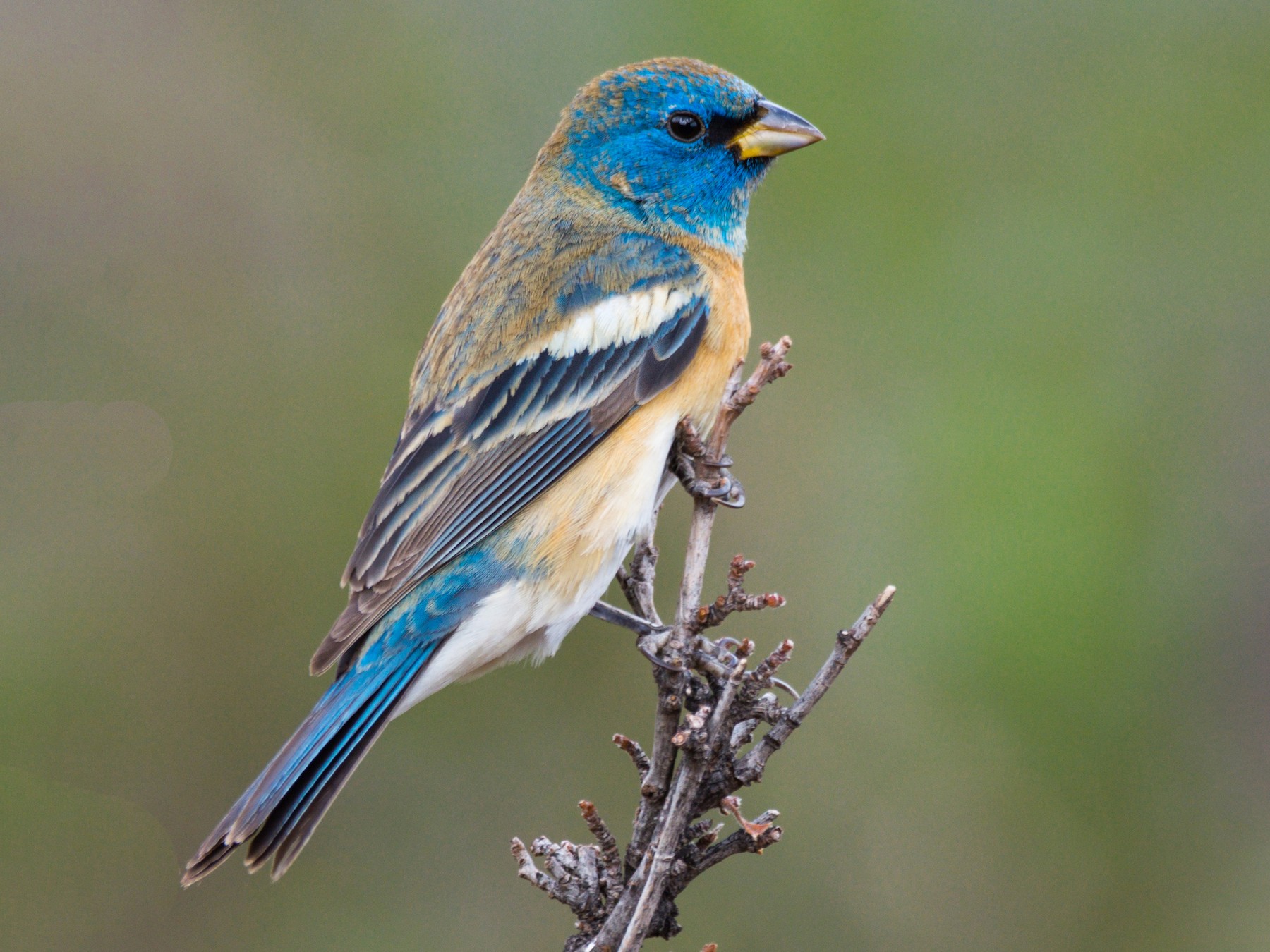Discover the marvelous world of warblers in Utah with this comprehensive guide. Embark on a journey of identification as you explore the diverse species of these small, migratory songbirds. With vivid descriptions, captivating photos, enchanting audio recordings of their songs, and fascinating fun facts, this guide is your ultimate companion.
Warblers are captivating creatures that embark on remarkable journeys, spanning from South America to the breeding grounds in Canada. Their vibrant colors, ranging from flashes of yellow to shades of green, mesmerize as they dart through woodlands and forests. The enchanting melodies they sing add to their allure, showcasing the rich diversity of their songs.
Known as wood-warblers, these North American songbirds primarily inhabit wooded areas and forests, enchanting the surroundings with their presence. However, be cautious of “warbler neck,” a discomforting stiffness and tingling in the neck caused by craning it upwards with binoculars, eagerly searching for these elusive beauties hidden among the treetops.
While warblers predominantly feast on insects, they occasionally visit backyard feeders in search of seeds or mealworms. Take this opportunity to observe their behavior up close while discovering other bird species that regularly grace Utah with their presence. To aid your identification endeavors, print a free ID chart and delve deeper into the avian wonders that surround you.
Designed to assist you in identifying the commonly occurring warblers in Utah, this guide utilizes real data gathered by passionate bird watchers. Avibase and eBird serve as invaluable sources, offering insights into when and where these captivating creatures can be spotted.
For each warbler species featured in this guide, indulge your senses in their enchanting songs and explore the various song types characteristic of each. Additionally, you can refer to a separate guide highlighting 13 easily recognizable warbler songs, ensuring your encounters with these melodious beings are both memorable and fulfilling.
Seasonal Warblers in Utah:
Warblers present all year: Yellow-rumped Warbler, Orange-crowned Warbler
Summer Warblers in Utah: Yellow Warbler, MacGillivray’s Warbler, Common Yellowthroat, Black-throated Gray Warbler, Yellow-breasted Chat, Virginia’s Warbler, Lucy’s Warbler, Grace’s Warbler
Migratory Warblers in Utah: Wilson’s Warbler, Nashville Warbler, Townsend’s Warbler
Embark on an exploration of the 13 warbler species in Utah, each accompanied by its unique characteristics and intriguing information:
1. Yellow-rumped Warbler
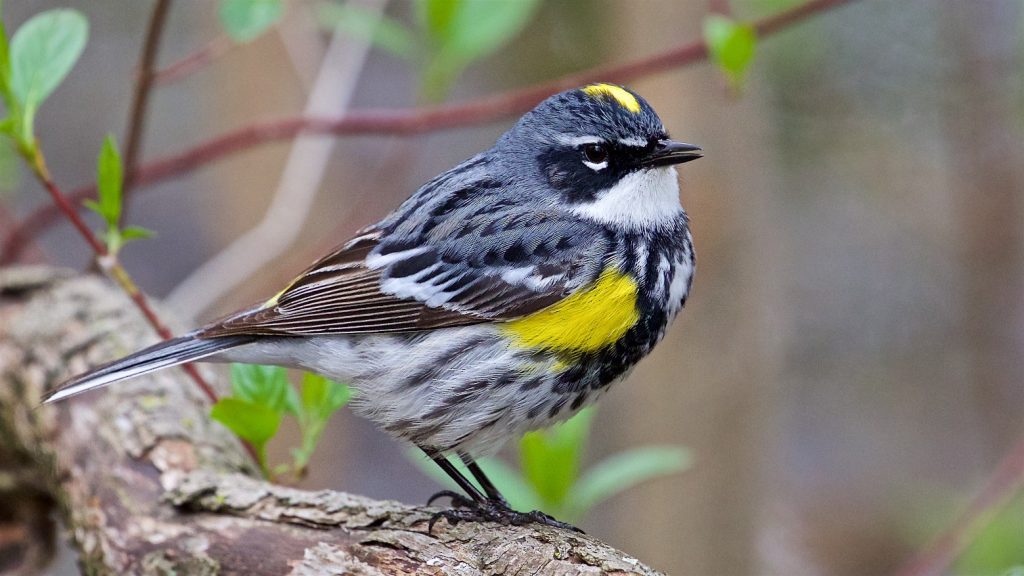
These resilient birds grace Utah throughout the year, with the highest occurrence during September and October migration. Their gray plumage showcases vivid flashes of yellow on the face, sides, and rump, complemented by white wings. Keep an eye out for two subspecies: the Myrtle Warbler lacking a yellow throat, and the Audubon’s Warbler, featuring additional white wing markings.
2. Yellow Warbler
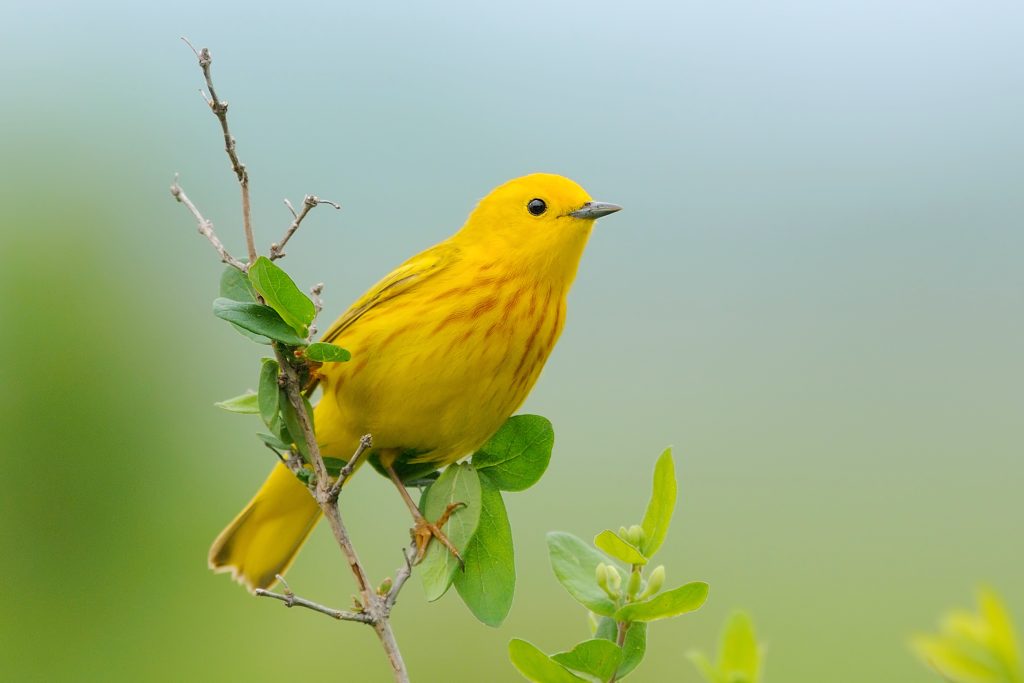
A vibrant presence during Utah’s breeding season from April to September, the Yellow Warbler captivates with its bright yellow plumage and chestnut streaks on the male’s breast. Females and juveniles possess a more subdued appearance. Witness their extensive migration from Canada and the US to Central and South America, observing their preference for streams, wetlands, and fields.
3. Orange-crowned Warbler

While their appearance may lack the brilliance of other warblers, Orange-crowned Warblers exhibit subtle yellow-olive coloring, which intensifies on the Pacific Coast. Breeding in Canada and western US states, these warblers embark on extensive migrations across various regions. Spot them amidst shrubs and low vegetation, relishing a diet of spiders, insects, fruits, berries, and seeds.
4. MacGillivray’s Warbler
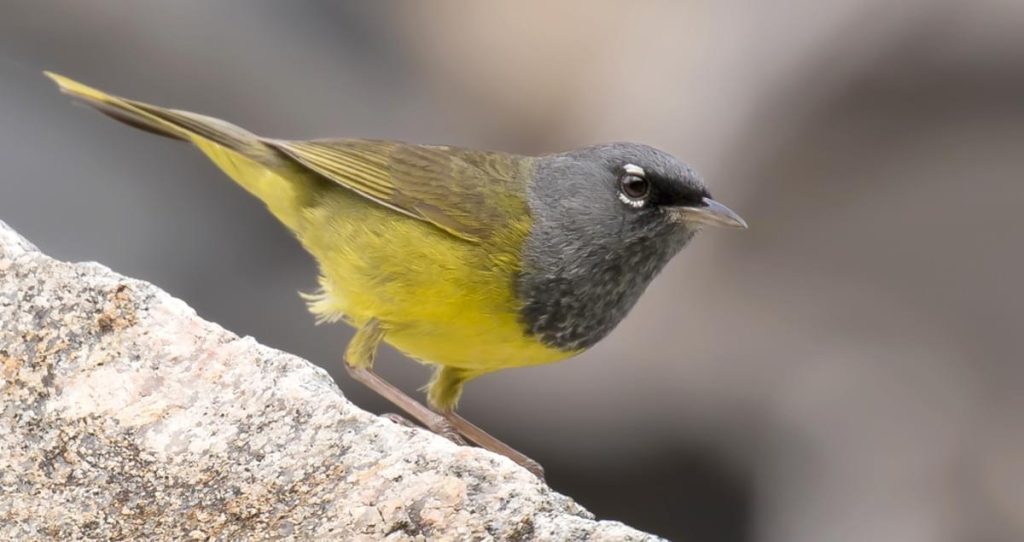
Utah’s summer welcomes the MacGillivray’s Warbler, a striking species with its olive-green upperparts and yellow underparts. Males exhibit a distinct black mask and a gray head, while females have a duller appearance with a grayish head. Look for them in dense shrubby areas near water sources, where they forage for insects, spiders, and berries.
5. Common Yellowthroat

The Common Yellowthroat is a small warbler species known for its distinctive black mask, yellow throat, and olive-green upperparts. These energetic birds are common in Utah’s wetland areas, marshes, and thickets. The males are more vibrant with a brighter yellow throat, while females and young birds display a paler yellow coloration. Listen for their distinctive “witchety-witchety-witchety” song.
6. Black-throated Gray Warbler
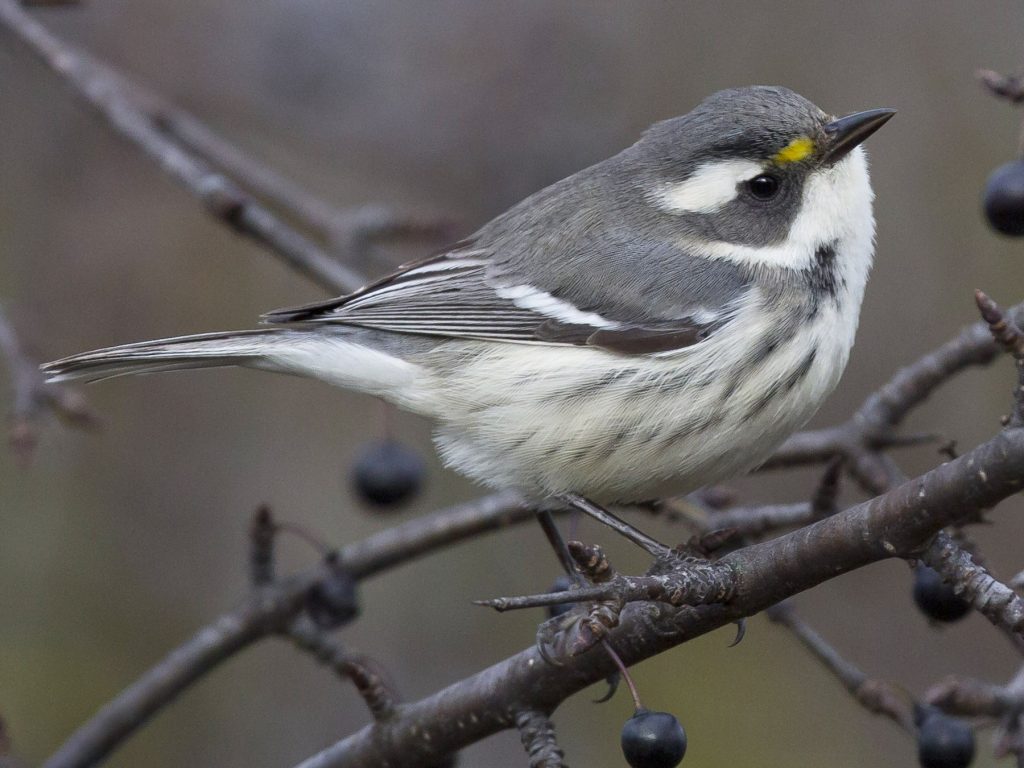
With its striking black throat and gray upperparts, the Black-throated Gray Warbler stands out among Utah’s warblers. These birds are common summer residents in mountainous areas with coniferous forests. Males boast a bold black-and-white pattern, while females have a more subdued appearance. They feed on insects and spiders found in the tree canopies.
7. Yellow-breasted Chat
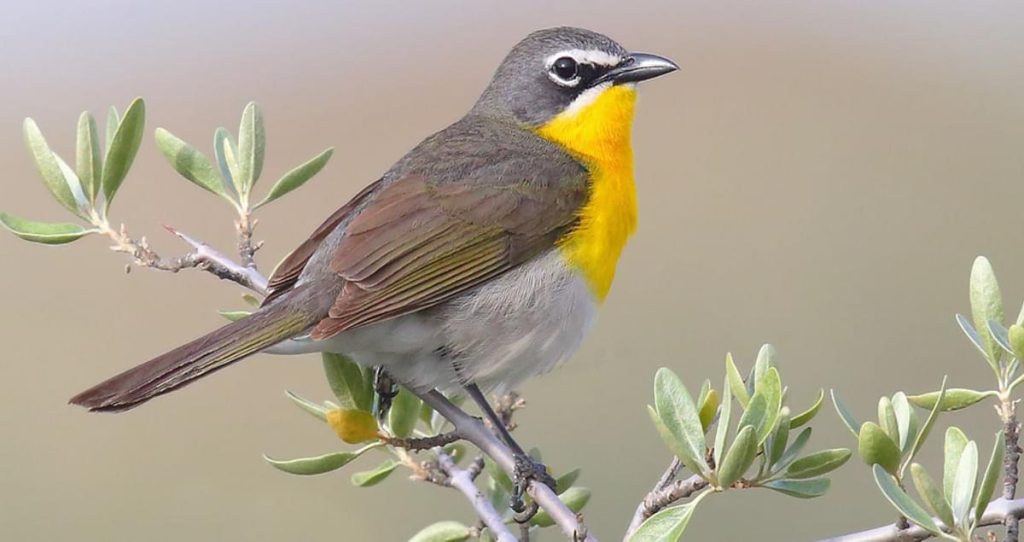
The Yellow-breasted Chat is a unique warbler species that boasts a vibrant yellow breast and a grayish-green body. These birds are known for their loud and diverse repertoire of songs, mimicking other bird species and incorporating various sounds. Look for them in dense shrubs and thickets near water sources. They are often elusive but can be spotted during their breeding season from April to August.
8. Virginia’s Warbler
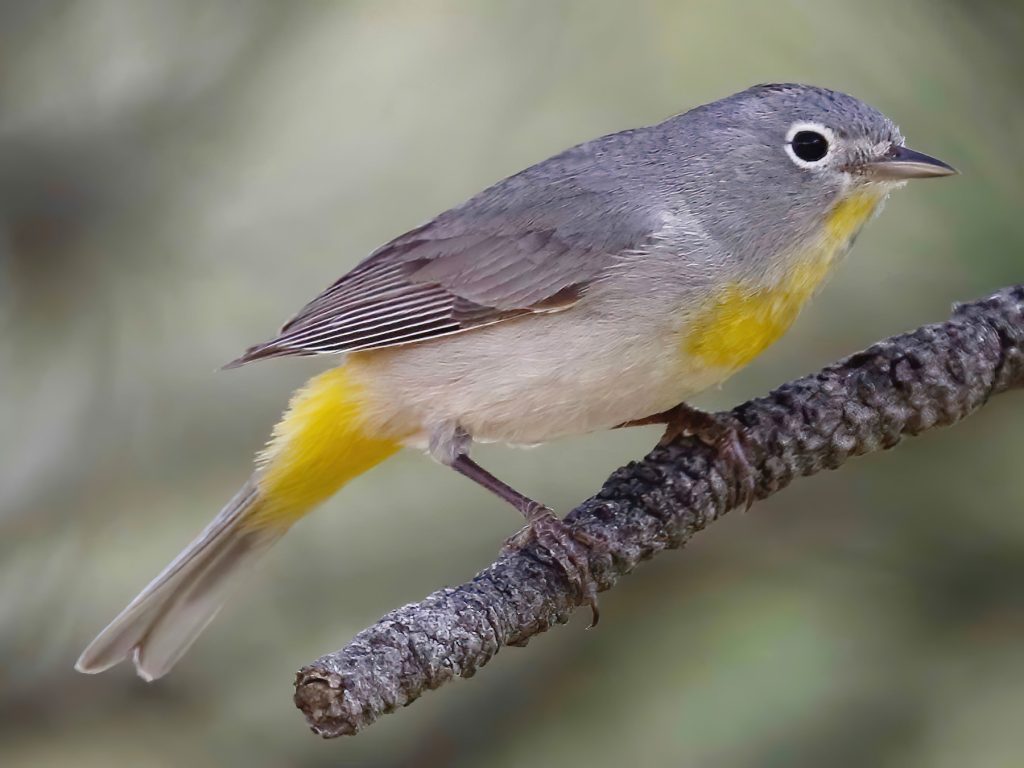
Virginia’s Warbler is a small, plain-looking species with a gray head, olive-green upperparts, and a yellow throat and underparts. They are named after the renowned ornithologist Virginia Anderson. These warblers breed in mountainous areas with mixed forests and aspen groves. Watch for them foraging in the mid to upper levels of the vegetation, feasting on insects and spiders.
9. Lucy’s Warbler
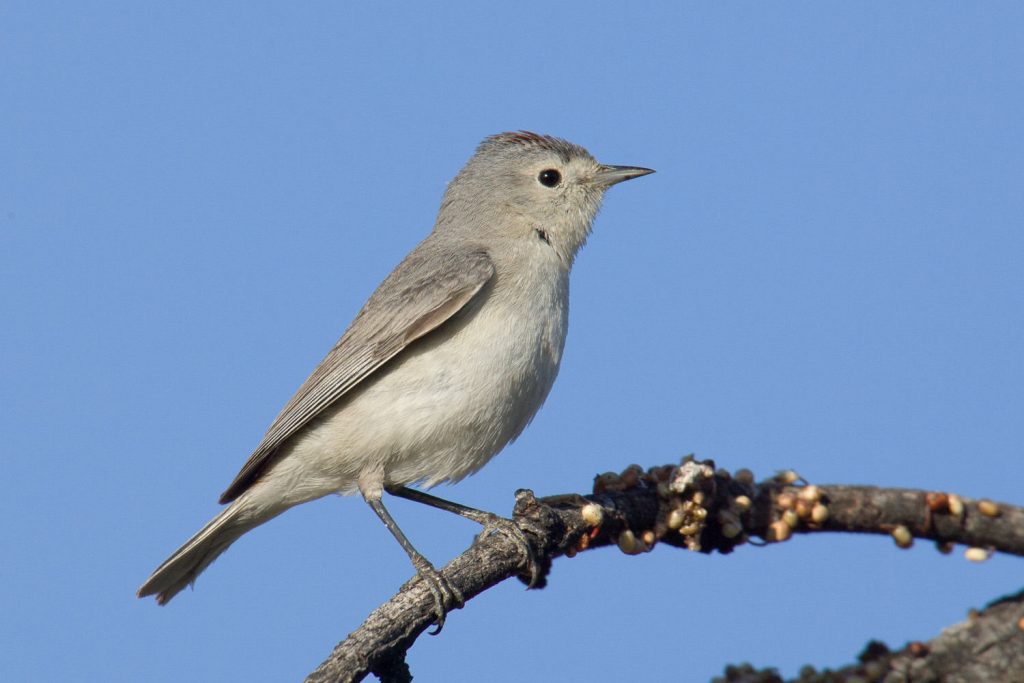
Utah’s desert regions are home to Lucy’s Warbler, a small warbler species with a pale gray head, pinkish-brown back, and white underparts. These birds prefer arid habitats with mesquite trees and thorny shrubs. Males sing a high-pitched, rapid song while perched on exposed branches. They primarily feed on insects, including bees and wasps, found in the desert environment.
10. Grace’s Warbler
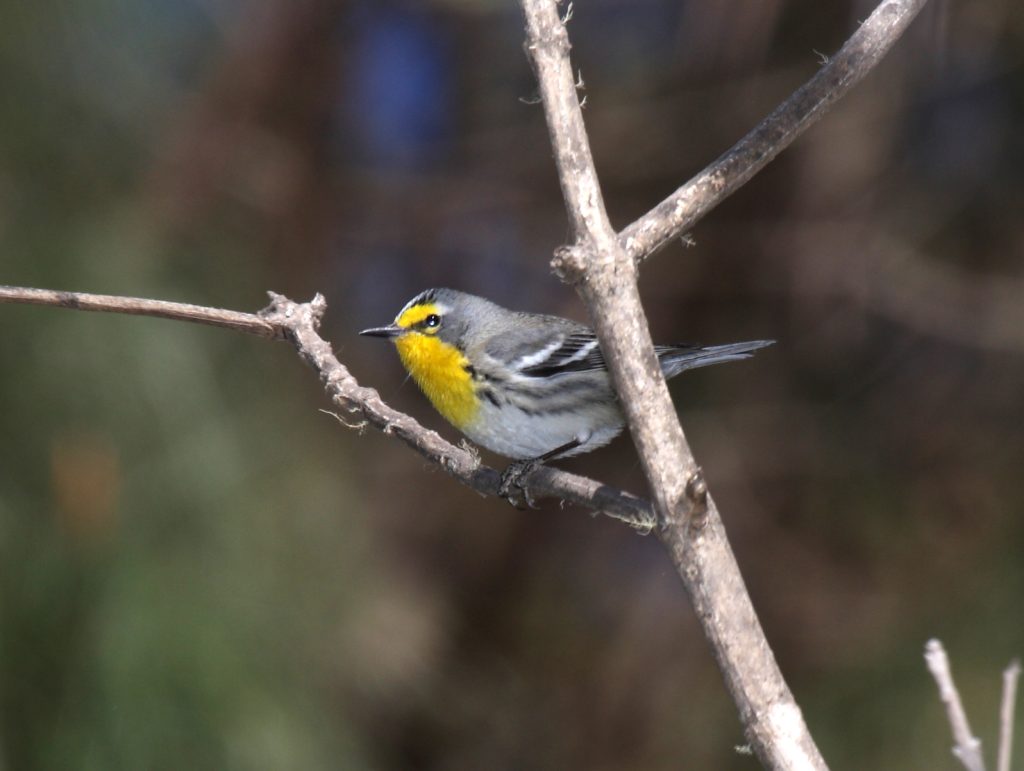
Grace’s Warbler is a visually stunning species with a yellow face, olive-green upperparts, and white underparts. These warblers inhabit pine-oak woodlands and mixed conifer forests in Utah’s mountainous regions. They are skilled insect catchers, often observed hanging upside down from branches to capture their prey. Listen for their melodious and high-pitched songs during the breeding season.
11. Wilson’s Warbler

Wilson’s Warbler is a small, bright yellow warbler with a distinctive black cap on the male’s head. Females have a lighter crown and a grayer back. These birds are abundant during migration, passing through Utah in spring and fall. Look for them in shrubby habitats near water, such as wetlands and streams. Wilson’s Warblers actively glean insects from foliage and twigs.
12. Nashville Warbler
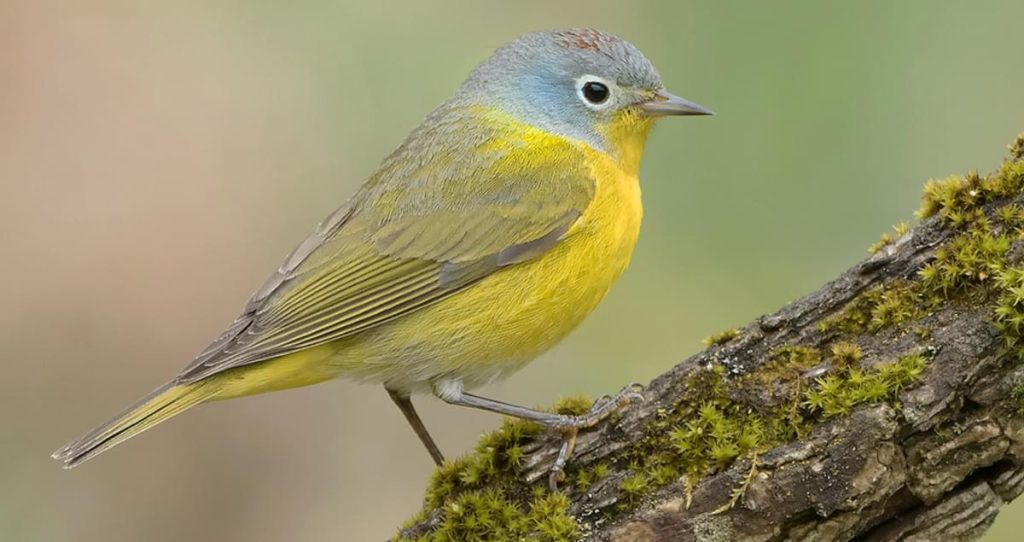
The Nashville Warbler is a petite warbler species with olive-green upperparts, yellow underparts, and a gray head. During their migration, they pass through Utah in large numbers, often seen in shrubby habitats and woodlands. They have a soft, high-pitched song that can be heard during the breeding season. These birds feed on insects and spiders found in the vegetation.
These twelve warbler species showcase the remarkable diversity of birdlife found in Utah. Each species has its own unique characteristics, habitats, and behaviors, making birdwatching in the state a rewarding and captivating experience.
13. Lazuli Bunting
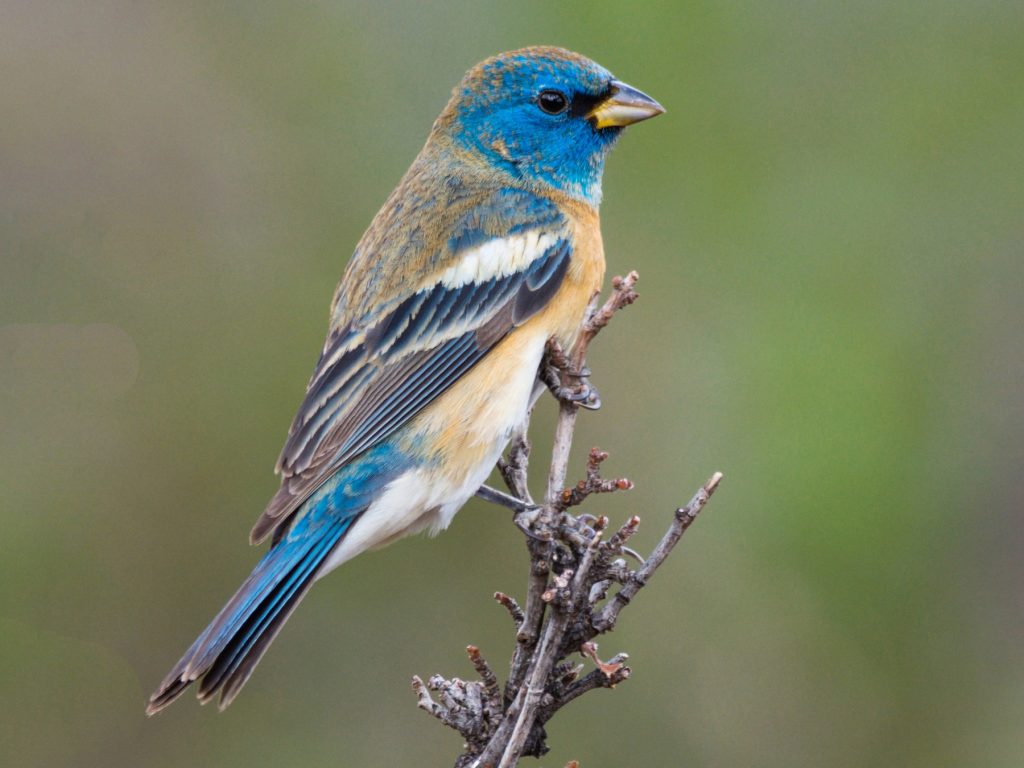
The Lazuli Bunting is a small songbird known for its vibrant blue plumage. Male buntings have bright blue upperparts and a reddish-brown breast, while females have a more subdued appearance with a combination of brown and blue tones. Look for them in open woodlands, shrubby areas, and along streams where they forage for insects and seeds. Their melodious songs can be heard during the breeding season.
14. Mountain Bluebird
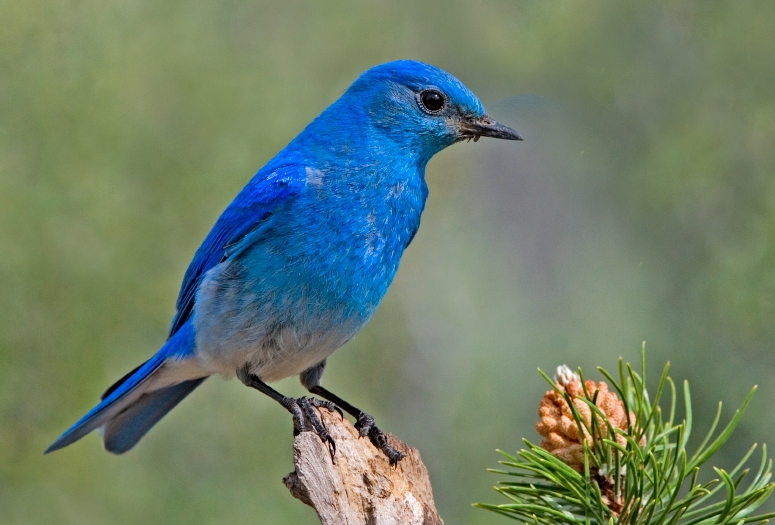
Utah’s mountainous regions are home to the Mountain Bluebird, a striking bird with vibrant blue plumage and a pale chest. These birds are known for their aerial displays, swooping and diving in pursuit of insects. They breed in open habitats such as meadows and grasslands. Keep an eye out for their nest boxes, as they readily utilize them for nesting.
15. Chukar Partridge
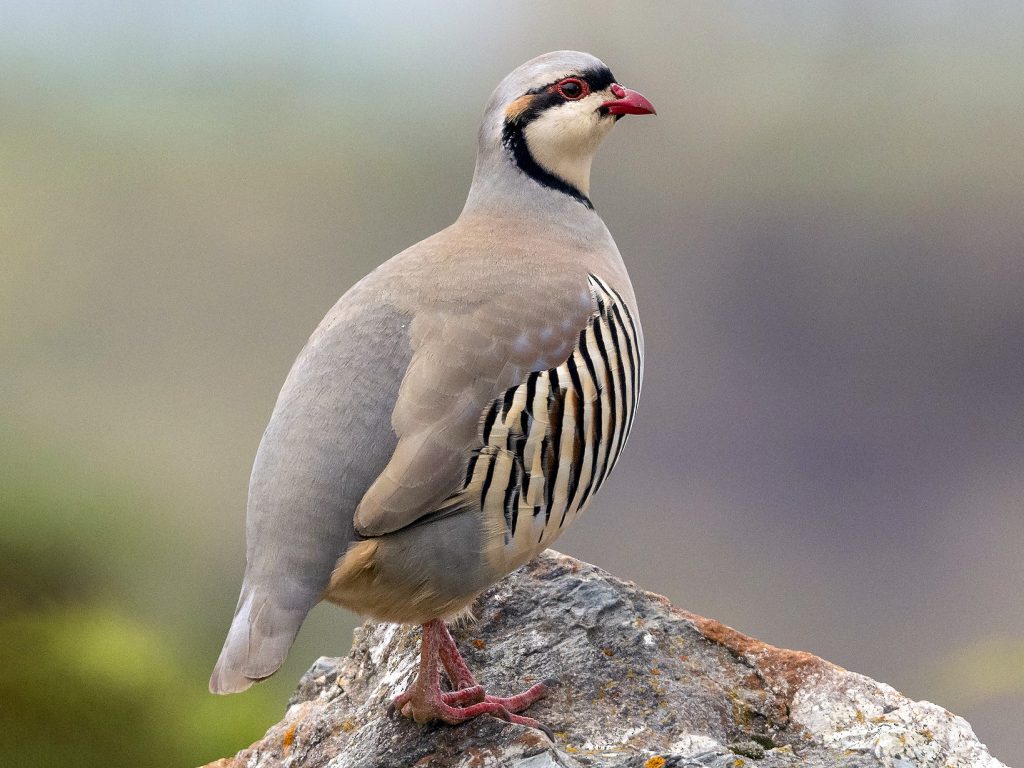
The Chukar Partridge is a game bird that has become established in the rocky, arid regions of Utah. They are native to Eurasia but have been introduced to various parts of North America. These birds have a distinctive appearance with grayish-brown plumage, a red bill, and a striking black and white facial pattern. They inhabit steep slopes, canyons, and arid grasslands. Chukars are known for their loud and distinctive “chuk-chuk-chuk” calls.
16. Sage Grouse
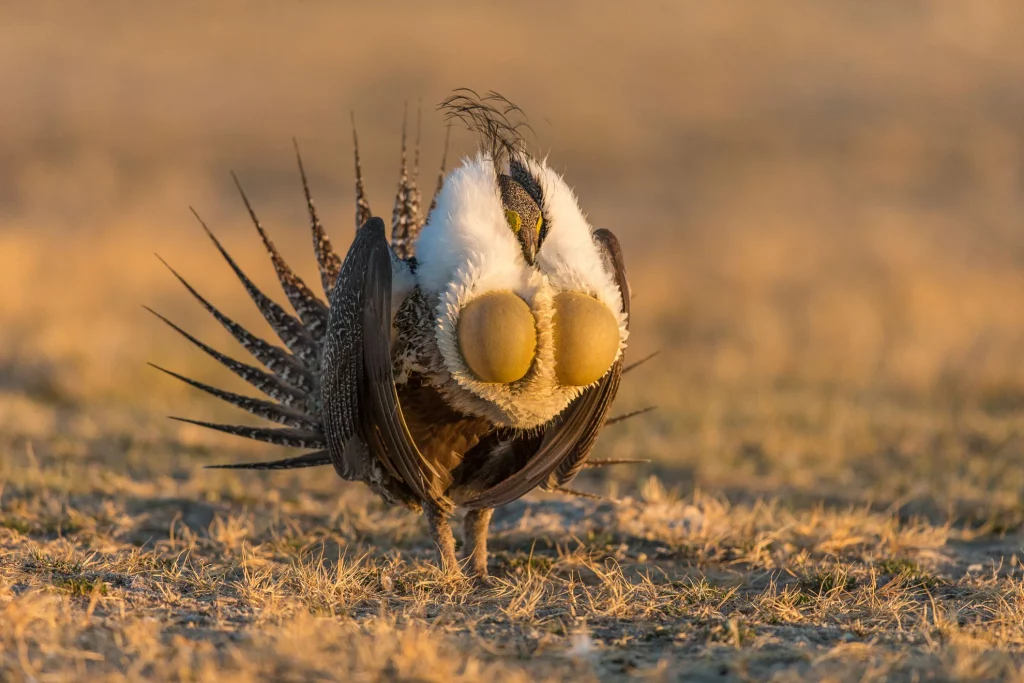
The Greater Sage Grouse and the Gunnison Sage Grouse are both sagebrush-dependent species found in Utah. These large, ground-dwelling birds are known for their elaborate courtship displays during the breeding season. Males puff out their chests, fan their tail feathers, and make unique popping sounds with their air sacs to attract females. They inhabit sagebrush steppe habitats and can be found in specific areas of the state.
17. American White Pelican

The American White Pelican is a large waterbird that can be spotted in Utah’s wetland areas, lakes, and reservoirs. These majestic birds have a wingspan of up to 9 feet (2.7 meters) and are known for their striking white plumage, long bills, and distinctive throat pouches. They feed by scooping fish and other aquatic prey from the water’s surface. Look for their graceful flights and congregations during the summer months.
18. Bald Eagle
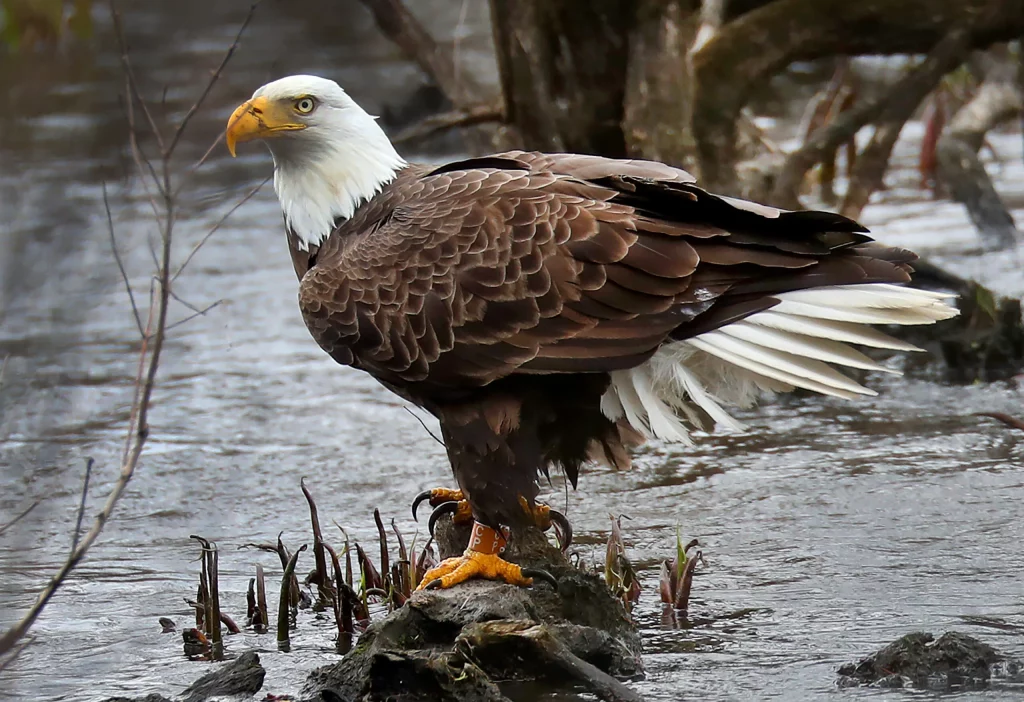
The Bald Eagle is an iconic bird of prey and a national symbol of the United States. These majestic birds can be seen in Utah during the winter months, particularly near large bodies of water where they feed on fish. Bald Eagles have dark brown plumage, a white head and tail, and a hooked yellow beak. Spotting one of these magnificent birds soaring or perched in a tree is a memorable experience.
These additional bird species contribute to the rich avian diversity found in Utah. Whether you explore wetlands, mountainous regions, deserts, or open habitats, you’ll have the opportunity to witness the beauty and wonder of these fascinating creatures. Happy birdwatching!
